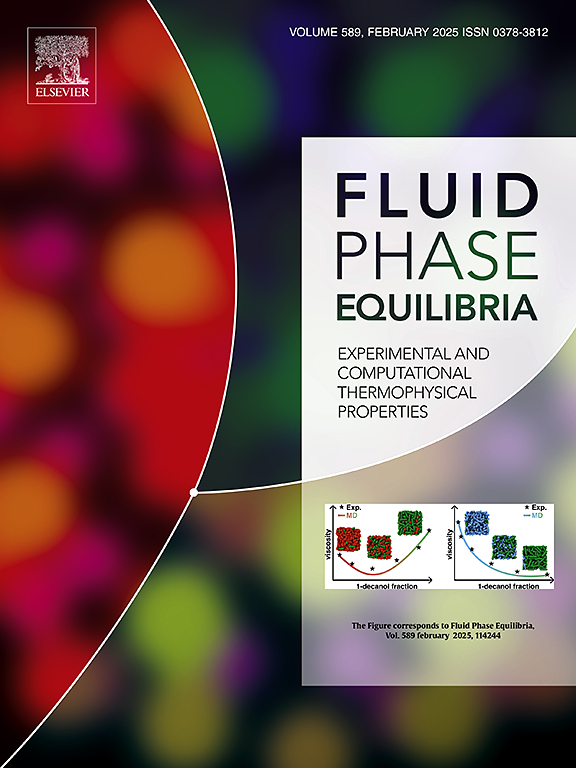Enhanced Parameter Estimation for Liquid-Liquid Equilibrium Using Homotopy Continuation as Stability Constraints
IF 2.8
3区 工程技术
Q3 CHEMISTRY, PHYSICAL
引用次数: 0
Abstract
Parameter estimation for the activity models such as NRTL and UNIQUAC for liquid-liquid equilibrium (LLE) is a nontrivial task, and this is due to the complex nature of these models and the need to uniquely fit the binary interaction parameters that predict phase behaviour and compositions similar to the experimental ones while ensuring satisfaction of the stability criterion and other conditions. To achieve this task, there is a need for a robust formulation that will capture all the necessary constraints and a good algorithm that will proffer the right solution. This study formulated an LLE problem by introducing the homotopy continuation to create discretised points for tracking the tie-lines to ensure phase stability. Other constraints were also included in this formulation to avoid fictitious phase prediction. The algorithm was applied to several LLE problems, including binary, ternary, and quaternary, for isothermal and non-isothermal LLE systems. The algorithm tackled all the problems, and the estimated parameters predicted stable phases with existent behaviour and compositions with very small discrepancies from the measured compositions. Though the constraint may increase the computational effort, it was beneficial, and the formulation also avoids the back and forth of a posteriori check.
求助全文
约1分钟内获得全文
求助全文
来源期刊

Fluid Phase Equilibria
工程技术-工程:化工
CiteScore
5.30
自引率
15.40%
发文量
223
审稿时长
53 days
期刊介绍:
Fluid Phase Equilibria publishes high-quality papers dealing with experimental, theoretical, and applied research related to equilibrium and transport properties of fluids, solids, and interfaces. Subjects of interest include physical/phase and chemical equilibria; equilibrium and nonequilibrium thermophysical properties; fundamental thermodynamic relations; and stability. The systems central to the journal include pure substances and mixtures of organic and inorganic materials, including polymers, biochemicals, and surfactants with sufficient characterization of composition and purity for the results to be reproduced. Alloys are of interest only when thermodynamic studies are included, purely material studies will not be considered. In all cases, authors are expected to provide physical or chemical interpretations of the results.
Experimental research can include measurements under all conditions of temperature, pressure, and composition, including critical and supercritical. Measurements are to be associated with systems and conditions of fundamental or applied interest, and may not be only a collection of routine data, such as physical property or solubility measurements at limited pressures and temperatures close to ambient, or surfactant studies focussed strictly on micellisation or micelle structure. Papers reporting common data must be accompanied by new physical insights and/or contemporary or new theory or techniques.
 求助内容:
求助内容: 应助结果提醒方式:
应助结果提醒方式:


